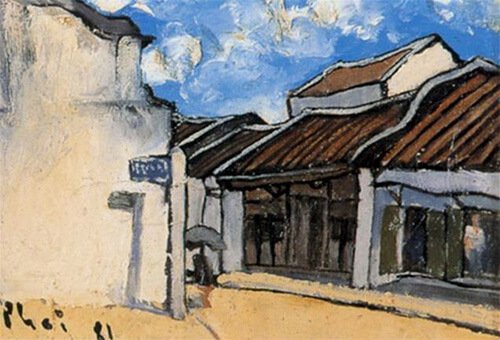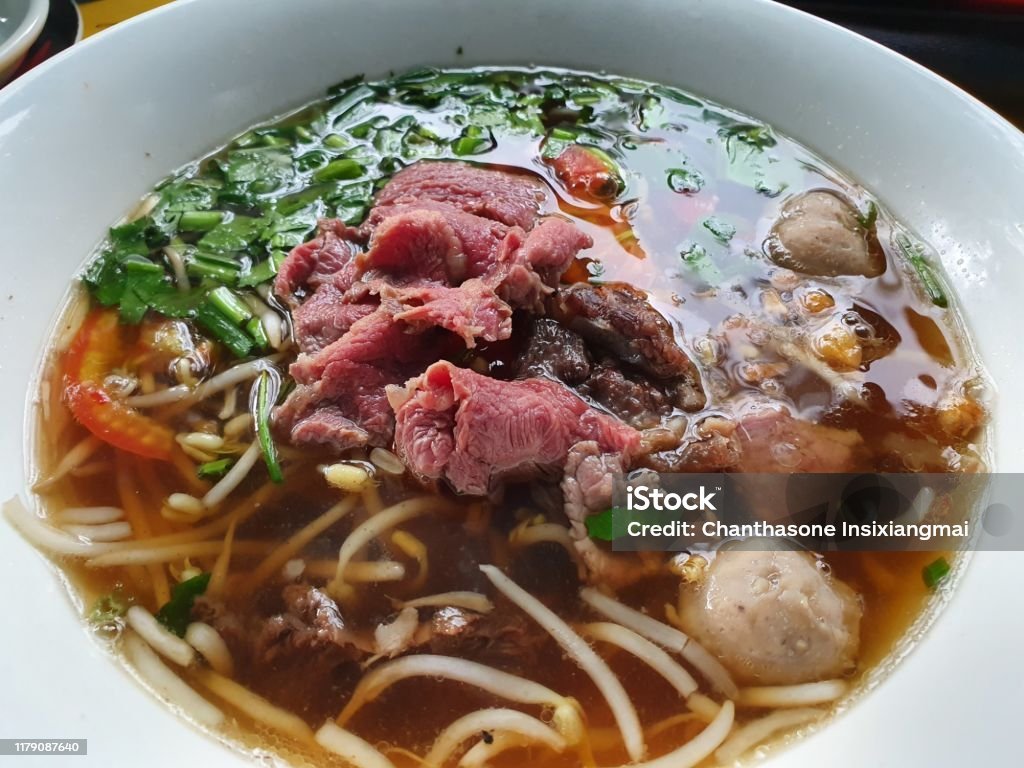

A Humble Beginning Rooted in Tradition
Bùi Xuân Phái, one of Vietnam’s most celebrated painters, was born in Kim Hoàng Village, Vân Canh Commune, Hà Tây Province (now part of Hà Nội – Hanoi). His birthplace was renowned for its traditional Kim Hoàng woodblock paintings, a cultural heritage that likely influenced his artistic sensibilities. Despite these rural roots, Phái grew up in a middle-class family in Hanoi, living first on Hàng Thiếc Street and later moving to 87 Hàng Bút Street, now Thuốc Bắc Street.
The vibrant streets of Hanoi’s Old Quarter were not just his home but a lifelong muse. Immersed in the city’s rhythms, Phái memorized every alley, street corner, and architectural detail of the 36 iconic streets. These elements would later define his artistic identity, making him synonymous with Hanoi itself.
A Journey Through Art and Resistance
Phái’s formal artistic education began at the prestigious Indochina Fine Arts College, where he graduated during the tumultuous years of 1941–1945. During this time, he developed a style that blended Western techniques with distinctly Vietnamese themes. Even as a student, his talent was evident. He participated in exhibitions, including an event in Tokyo, and won a prize at the 1946 National Fine Arts Exhibition.
Amid Vietnam’s struggle for independence, Phái joined the resistance, contributing to the cultural movement while also honing his craft. Returning to Hanoi in 1952, he settled permanently at 87 Thuoc Bac Street, where he continued to paint and live a modest life. Though he briefly taught at the Hanoi College of Fine Arts in the mid-1950s, his heart was always in creating art.
A Contemporary of Artistic Giants
Bùi Xuân Phái was part of the last generation of students at the Indochina Fine Arts College, alongside luminaries such as Nguyễn Sáng, Nguyễn Tư Nghiêm, and Dương Bích Liên. Together, they shaped the course of modern Vietnamese art, blending tradition with modernity.
While Phái explored various themes, including portraits, rural landscapes, and chèo (Vietnamese opera), his depictions of Hanoi’s Old Quarter—affectionately dubbed Phố Phái—cemented his legacy. His works were not merely paintings of streets but vivid encapsulations of Hanoi’s soul, history, and transformation.



The Essence of Phố Phái
The term Phố Phái reflects more than just Phái’s street paintings; it symbolizes the emotional connection between the artist, his city, and its people. His works capture the charm of Hanoi from the 1950s to the 1970s, blending realism with nostalgia. Bold outlines, rich textures, and layered colors characterize his depictions of the city.
Through his brush, viewers can feel the weight of time on weathered walls and ancient rooftops. The muted tones evoke a sense of longing and melancholy, a premonition of change and the inevitable fading of the old Hanoi. Even seemingly mundane elements, like a crumbling façade or a quiet alley, take on poetic significance in Phái’s hands.
Despite his intimate familiarity with the city, Phái rarely painted outdoors. Instead, he relied on memory, treating each canvas as a dialogue with his beloved Hanoi.

The Philosophy Behind the Art
Phái believed that painting transcended mere replication. For him, art required intellect, emotion, and imagination. “Painting is not copying or measuring precisely,” he remarked. “A painting’s beauty lies in the artist’s creativity.”
This philosophy explains why Phố Phái paintings feel both familiar and unique. While grounded in reality, they reflect Phái’s interpretation, transforming ordinary streets into timeless narratives. His works invite viewers to see Hanoi through his eyes—full of depth, complexity, and emotion.
A Life Intertwined with Hanoi
Phái’s connection to Hanoi was profound. He wandered the Old Quarter daily, observing its life and essence. While he rarely sketched on-site, his mental catalog of the city’s details allowed him to recreate it with extraordinary depth and authenticity.
Critics and admirers often noted the paradoxical simplicity and sophistication of his work. As Thái Bá Vân eloquently described, Phái’s art was “like an underground stream, gradually spreading and deeply penetrating the hearts of even the most distant souls.”


Beyond Hanoi’s Streets
Although best known for his street paintings, Phái was a versatile artist. His themes included portraits, chèo, rural landscapes, nudes, and still lifes. Limited resources did not hinder his creativity; he often painted on unconventional materials like newspapers and cigarette boxes.
His talent extended to book illustrations, earning international recognition. In 1982, he received the Leipzig Book Award for his work on Hề chèo, a testament to his versatility and impact on Vietnamese art.
The Legacy of Bùi Xuân Phái
Despite facing financial hardships and a lack of recognition during his lifetime, Phái remained steadfast in his commitment to art. He painted tirelessly, driven by a passion to capture the simple beauty of everyday life. His dedication often meant sacrificing comfort, using any material he could find to create his masterpieces.
Phái passed away on June 24, 1988, after a battle with lung cancer. Yet, his legacy lives on. His paintings are not just artworks; they are windows into Hanoi’s soul—a city of quiet streets, moss-covered rooftops, and enduring charm.
Today, Bùi Xuân Phái is celebrated as one of Vietnam’s greatest painters. His work transcends time and borders, resonating with both Vietnamese and international audiences. As Hanoi evolves, his art serves as a poignant reminder of its rich history and cultural identity.
Phái’s love for Hanoi was mutual. The city and its people continue to cherish his legacy, finding in his paintings a timeless connection to their heritage. Through Phố Phái, Bùi Xuân Phái remains an inseparable part of Hanoi’s heart, immortalized in the city’s art and memory.








